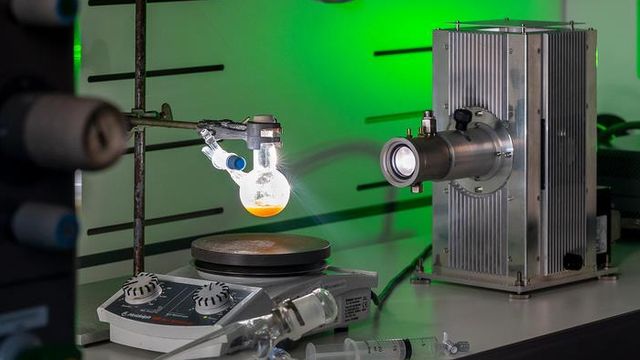Researchers at the Technical University of Munich (TUM) have developed a new sustainable process that uses the principle of plant photosynthesis to create synthetic gas (syngas). The new process can produce syngas for the large-scale chemical industry and be used to charge batteries. Syngas, which is a mixture of carbon monoxide and hydrogen, is used as an intermediate product in the manufacturing of several chemical starter materials like synthetic hydrocarbon fuels, methanol, and ammonia. The researchers developed a “nanozyme” that imitates the properties of the enzymes involved in photosynthesis, which produces syngas using carbon dioxide, water, and light. The team’s success in creating this system could provide a new and sustainable way of producing syngas that replaces the current method of using fossil raw materials. Additionally, the team has developed a new material that can store light energy as electric energy. This new material has significant potential for creating a more sustainable future, as it could be used to charge batteries with sunlight, providing a new renewable energy source.
Using the principles of plant photosynthesis, researchers at the Technical University of Munich (TUM) have developed a sustainable process to create synthetic gas (syngas) for the chemical industry and battery charging. Syngas is a blend of hydrogen and carbon monoxide and is a crucial intermediate in the production of several chemical starting materials like synthetic hydrocarbon fuels, methanol, and ammonia. Currently, syngas is manufactured using fossil raw materials almost exclusively. The team, led by Prof. Roland Fischer from the Chair of Inorganic and Organometallic Chemistry, has created a yellow powder that imitates the enzymes’ properties in photosynthesis. They call this new material a “nanozyme,” which creates syngas using carbon dioxide, water, and light.
Dr. Philip Stanley, who addressed this topic as part of his doctoral thesis, explains that the “nanozyme” has a molecule that acts as an energy antenna and receives light. The electrons then move to a reaction center, the catalyst, which turns carbon dioxide into carbon monoxide and water into hydrogen. The researchers had to arrange the antenna, the electron-passing mechanism, and the two catalysts in a way that the highest possible yield is achieved from light. They succeeded in this task as they achieved an energy yield of 36% from light, which is significantly higher than previous systems that could attain every tenth photon at best.
The team’s results raise hopes that the technical realization of this process could make industrial chemical processes more sustainable. The researchers’ process could provide a new and sustainable way of producing syngas that would replace the current method that uses fossil raw materials. The ability to use sunlight to create chemical energy through syngas production could be a significant step towards sustainable energy production. Additionally, the team’s system could be used to charge batteries, providing a new renewable energy source.
Researchers at the Technical University of Munich (TUM) have developed a new material that can store light energy as electric energy. One possible application of this technology is charging batteries with sunlight, eliminating the need for a wall socket. This material uses components similar to those found in the “nanozyme” developed by the team for producing synthetic gas. The energy receiver in this material is integrated so tightly that it remains in a stored state for a more extended period. The team has already demonstrated the feasibility of this system in the lab.
Dr. Julien Warnan, the group leader for photocatalysis, says that there are two ways to use solar energy directly. Either one can harvest electric energy from it or use the energy to initiate chemical reactions. These two systems, both based on the same principle, show that the researchers have succeeded in their experiments.
This new material’s ability to store light energy as electric energy has significant potential for creating a more sustainable future. With the use of this material, batteries could be charged with sunlight, providing a new renewable energy source. Additionally, the team’s success in experimenting with this technology demonstrates the potential for using solar energy to power chemical reactions.
Don’t miss interesting posts on Famousbio
